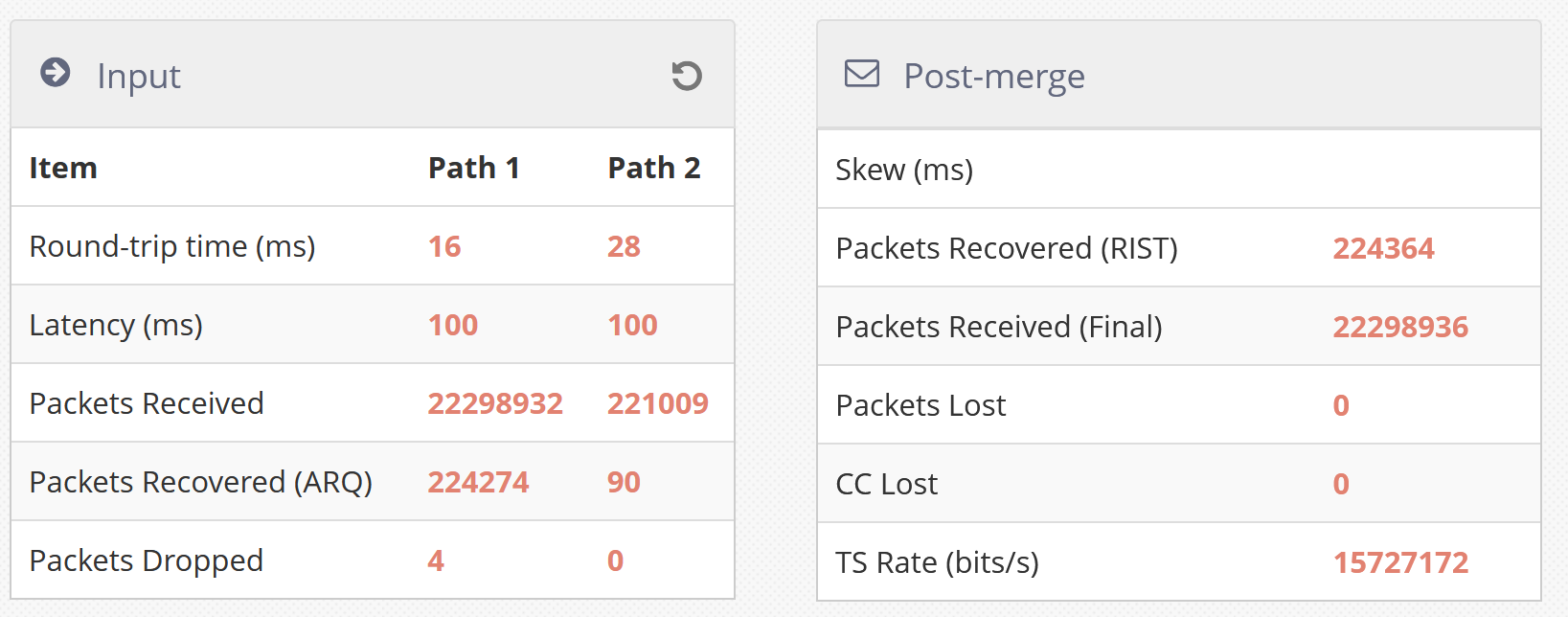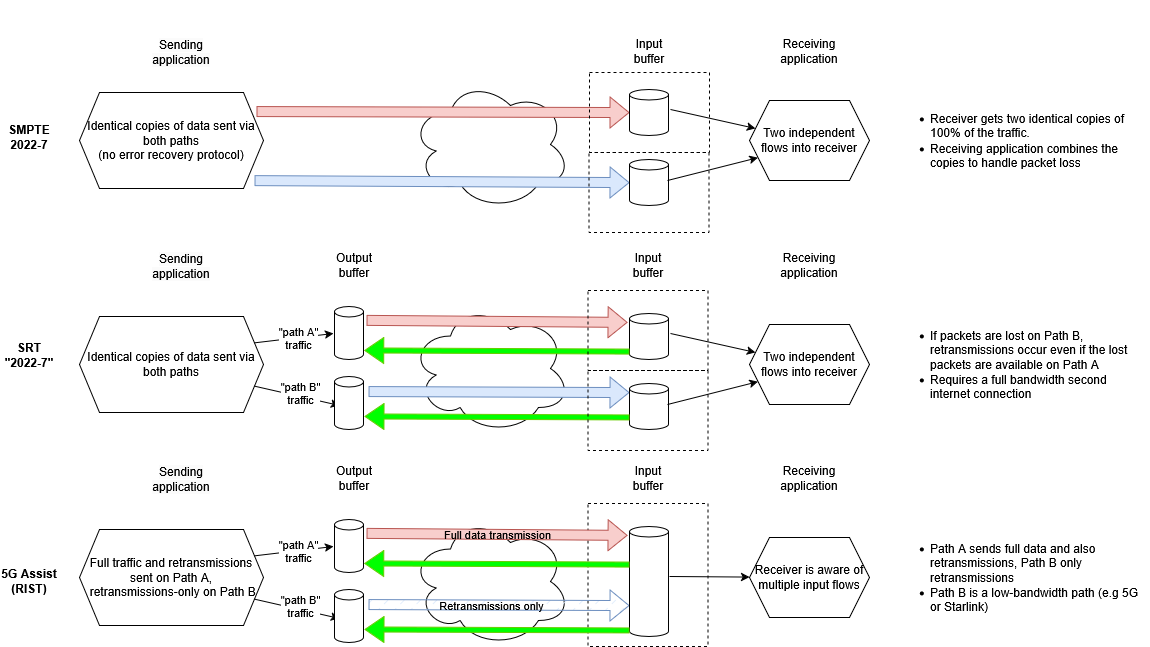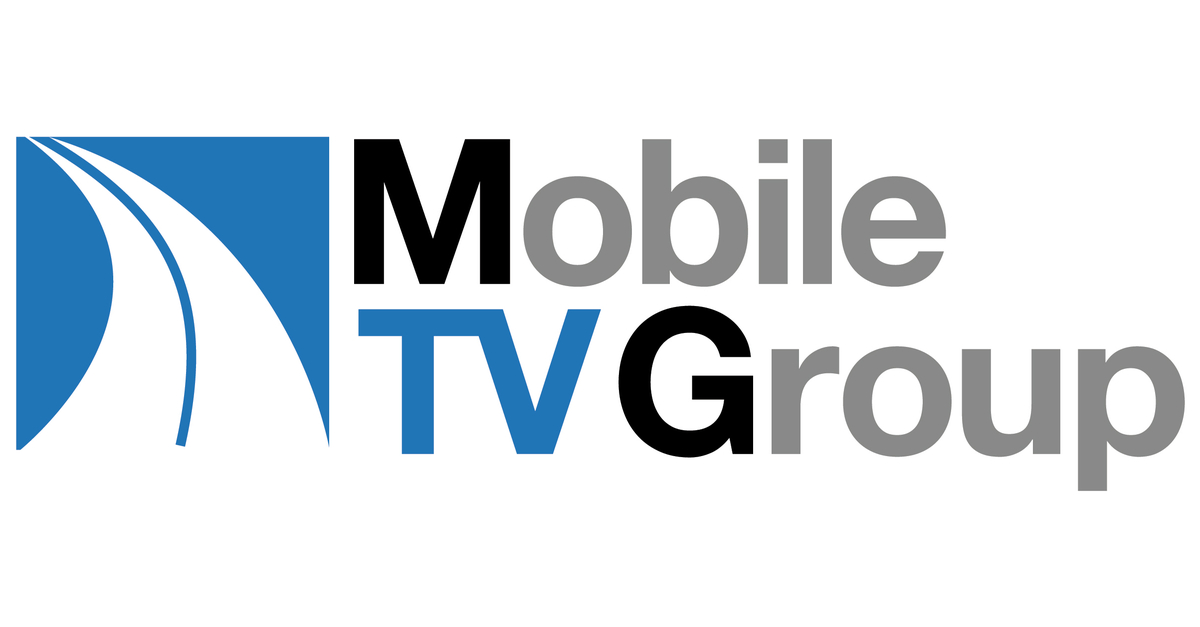 Many remote productions (REMIs) now use the public internet to transport video. It is often extremely challenging to maintain low-latency over the public internet, especially when the internet is provided by a third-party such as a venue and potentially shared with others. Our new 5G Assist solution adds an additional layer of reliability by using 5G or Starlink for packet recoveries, without the additional expense of a second internet connection. Let’s explain how:
Many remote productions (REMIs) now use the public internet to transport video. It is often extremely challenging to maintain low-latency over the public internet, especially when the internet is provided by a third-party such as a venue and potentially shared with others. Our new 5G Assist solution adds an additional layer of reliability by using 5G or Starlink for packet recoveries, without the additional expense of a second internet connection. Let’s explain how:
How 5G Assist Solves REMI over unmanaged networks
Traditionally, multiple internet connections have been used with techniques such as 2022-7 and we have written in detail about this topic before. In many venues a second internet connection may not exist, or the internet connections may not be truly diverse or not available for other reasons. 5G or Starlink may also be available, but may not be usable in a 2022-7 configuration for two main reasons:
- The bandwidth (especially upload) may not be available
- Even if the bandwidth is available, data plan charges may be cost prohibitive
To make the situation even more complicated, venue internet may perform fine during rig days, but be congested during match days with other traffic.
As a result many REMIs over the public internet are run with unduly high packet recovery latencies (buffers), impacting the production experience.
5G Assist allows the best of both worlds: By sending only packet retransmissions over the second 5G (or Starlink) connection, only a small amount of bandwidth is needed, keeping data charges low.
As seen in the above transmission, using a domestic cable internet connection, and a 5G modem handling retransmissions-only, all packets were recovered, even with one percent random loss added in a simulator. The cable path lost four packets overall, all of which were recovered by the 5G connection. In some cases the 5G connection was actually first to recover the packet, ahead of the cable connection. All of this was done with the 5G connection using a mere trickle of data, 150kbps total, keeping bills down and still being usable in a congested venue. Furthermore, it allows for a lower latency than with the wired connection alone.
5G Assist vs 5G Flyaway
It’s first worth pointing out how 5G Assist differs from our 5G Flyway solution. Our 5G Flyaway solution is designed to deliver a finished program by bonding multiple 5G networks. This has a latency of a few seconds (comparable to satellite). On the other hand 5G Assist is there to support production, e.g transporting graphics from the cloud or central location to a truck, where latencies are ideally as low as 100-200 milliseconds.
| Technology | Use-case | Target Latency |
| 5G Assist | Interactive Remote production | 100-300ms |
| 5G Flyaway | Final program delivery | 2000-3000ms |
How does 5G Assist work under the hood?
While most REMIs over the public internet use the SRT protocol, the SRT protocol has the limitation that it is a stateful point-to-point protocol. It also doesn’t support retransmissions down a separate link (in any backwards compatible fashion at least)
We’ve talked in a previous blog post about the drawbacks that the “2022-7 SRT” that exists in the marketplace has. In particular, each link is unaware of each other and wastefully retransmits lost packets that may have arrived on the other link. A short retransmission buffer (for low latency) exacerbates the problem, as the limited time available for retransmissions cannot be wasted on packets that exist on the other link – i.e in a situation where both links are losing packets, only packets lost on both links need retransmission, something which SRT is not aware of. As a result the chance of packet loss is much higher with SRT.
The RIST protocol is aware of both links and as a result can send a retransmission down the main (usually wired) path and a retransmission down the 5G or Starlink connection. During packet loss issues on the wired link, the secondary link can also recover packets. Because the second link is only used when there is packet loss, data charges and overall bandwidth are both very low.
The diagram below compares the different approaches:
 Availability
Availability
 A retransmit-only option is available as an encoder output as shown above. This output can be routed via a different internet connection such as 5G or Starlink. It is hoped that other RIST vendors will support this functionality in the future.
A retransmit-only option is available as an encoder output as shown above. This output can be routed via a different internet connection such as 5G or Starlink. It is hoped that other RIST vendors will support this functionality in the future.
Conclusion
5G Assist provides a cost-effective way to provide packet recovery during low-latency REMIs without investing in a second internet connection (that even when available may end up having the same packet loss characteristics as the first). It can be added easily to existing REMI workflows and using 5G or Starlink, at only a small additional cost.
Learn more about how our low-latency encoders and decoders can transform your REMI.

